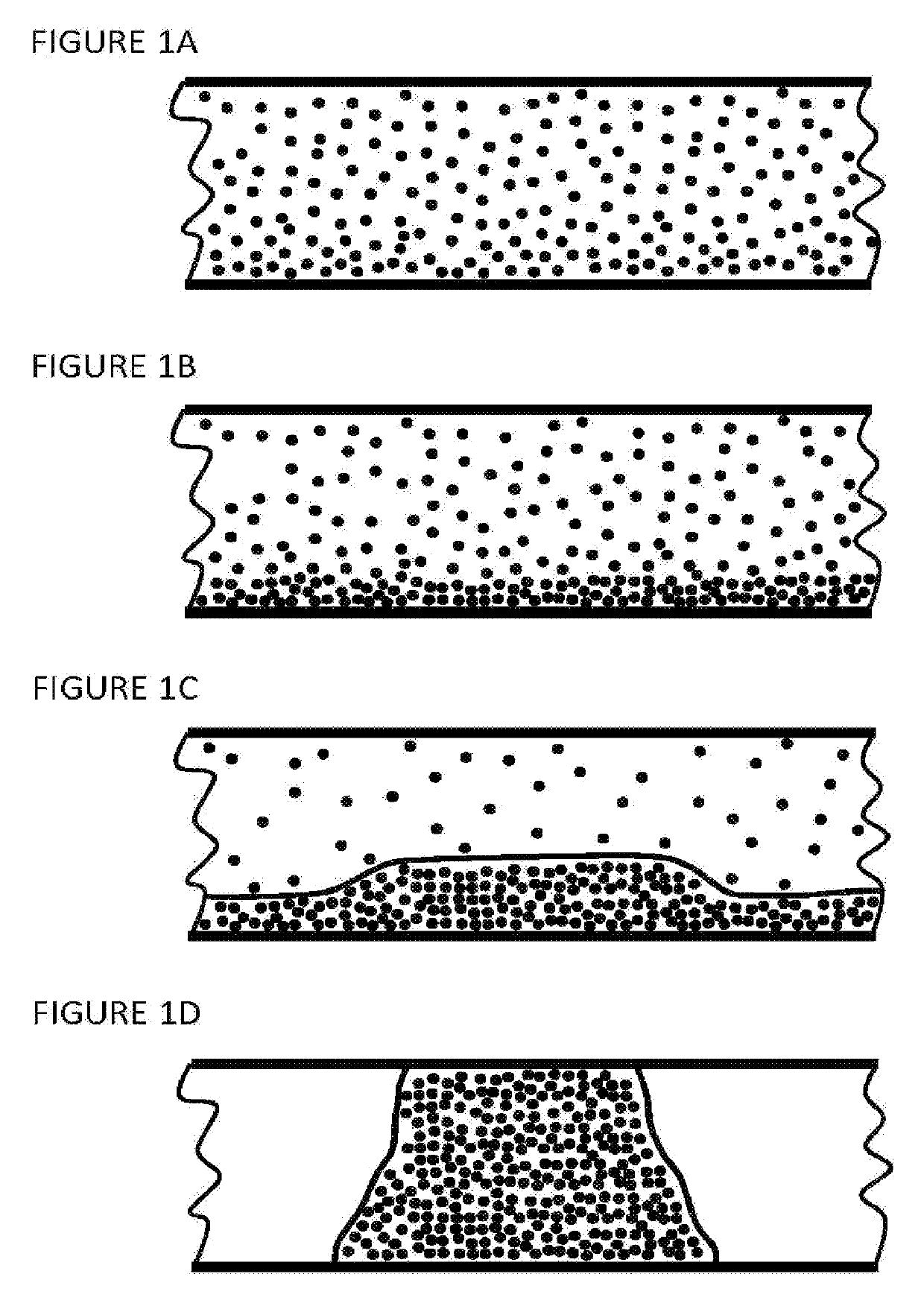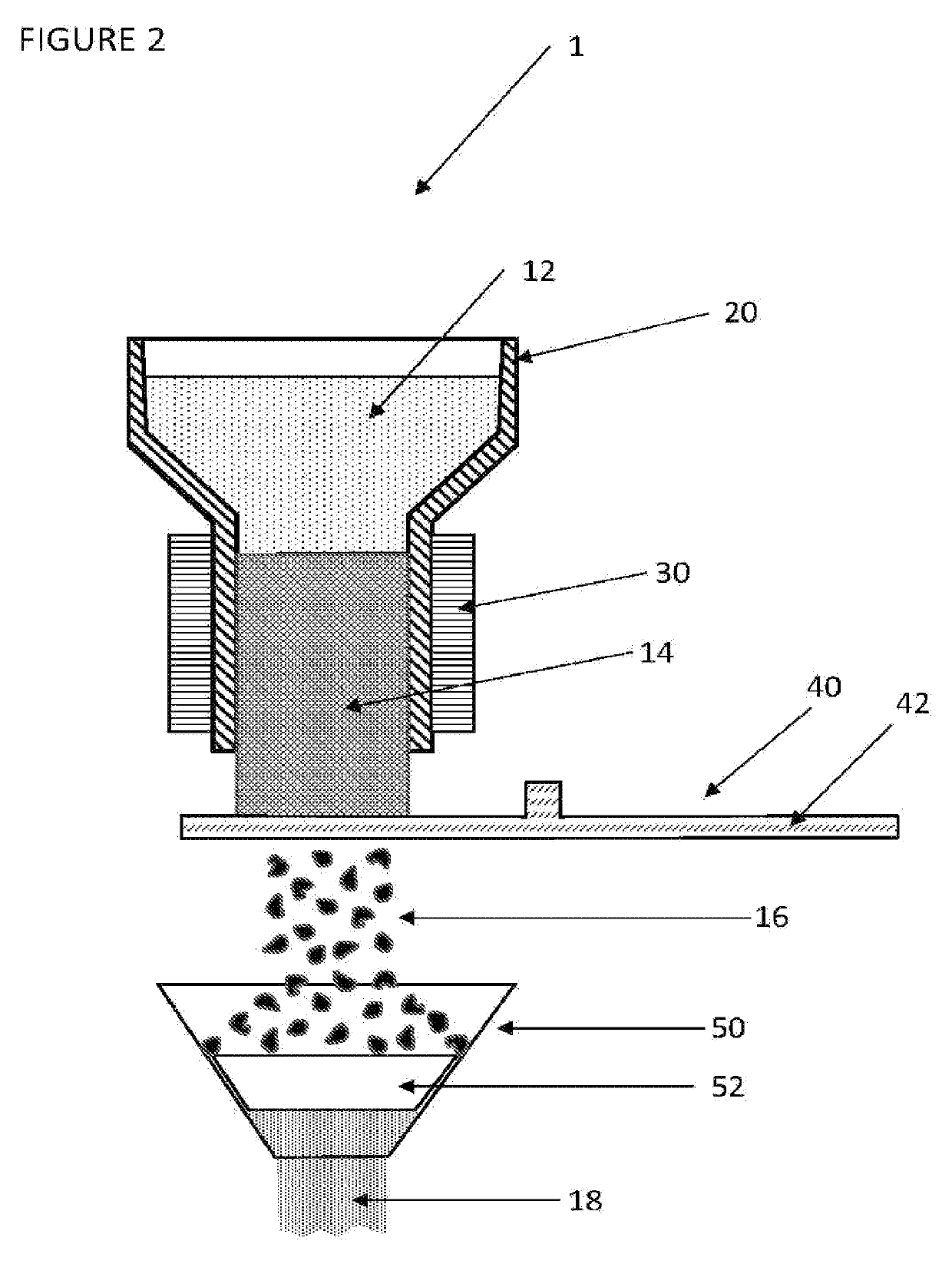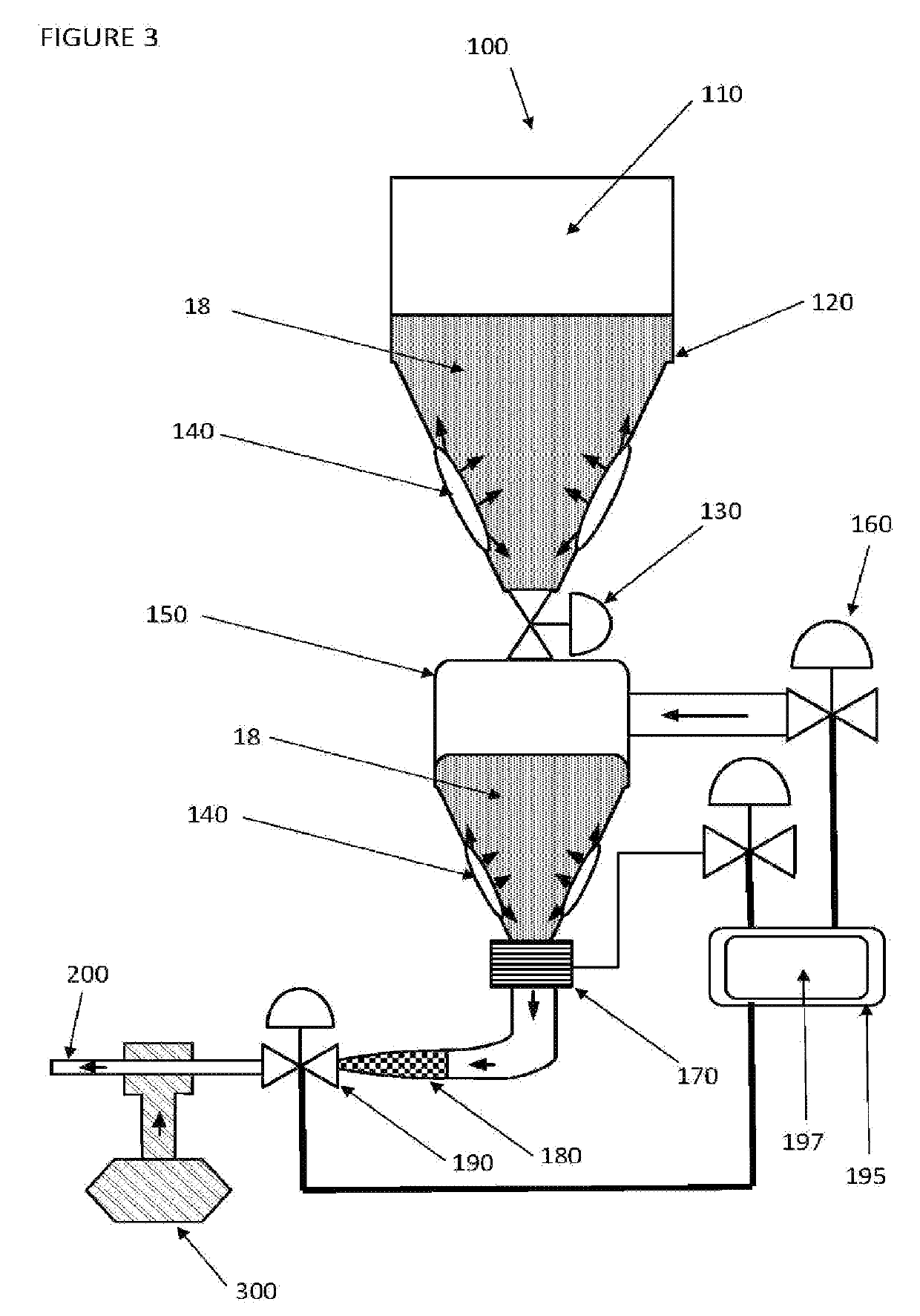Dense phase material transport in pulmonary system
a pulmonary system and material technology, applied in the field of medical systems and methods, can solve the problems of small fraction of the material successfully delivered, limited material amount of aerosol, and limited aerosol or collection of particles suspended in gaseous fluid, so as to reduce particle-bronchial tree interactions, increase the per breath delivery rate, and reduce the effect of particle-bronchial tree interactions
- Summary
- Abstract
- Description
- Claims
- Application Information
AI Technical Summary
Benefits of technology
Problems solved by technology
Method used
Image
Examples
Embodiment Construction
[0037]The following detailed description of the present invention focuses primarily on dense phase transport of frozen aqueous particles (FSP) 18, such as frozen saline particles or other source materials to the respiratory system. The systems described herein are capable of dense phase delivery of frozen aqueous particles 18 into the respiratory system. The systems described herein are further capable of delivering one or more source materials singularly, combined, sequentially, or in other combinations and at the same or different time points, to the respiratory system and / or over a range of transfer regimes, including dilute phase (aerosol) through dense phase—plug flow. The detailed description focuses on a generation and delivery system including such components as controls, patient interface 200, and ventilator 300, as required to enable dilute phase—strand flow and dense phase transport of frozen aqueous particles 18 to the lungs. The system of the present invention is not li...
PUM
 Login to View More
Login to View More Abstract
Description
Claims
Application Information
 Login to View More
Login to View More - R&D
- Intellectual Property
- Life Sciences
- Materials
- Tech Scout
- Unparalleled Data Quality
- Higher Quality Content
- 60% Fewer Hallucinations
Browse by: Latest US Patents, China's latest patents, Technical Efficacy Thesaurus, Application Domain, Technology Topic, Popular Technical Reports.
© 2025 PatSnap. All rights reserved.Legal|Privacy policy|Modern Slavery Act Transparency Statement|Sitemap|About US| Contact US: help@patsnap.com



